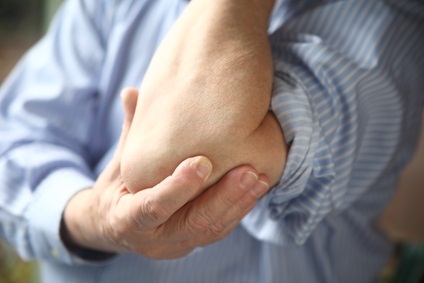 An MRI is a very expensive imaging study. A distal biceps tendon rupture can be difficult to diagnose by patient history and only using one common physical exam test. An excellent study from St. Joseph’s Health Centre in Toronto, Ontario, found that if three special physical exam tests are used in conjunction with a history from the patient, a distal biceps tendon rupture can be diagnosed 100 percent of the time, without the use of an MRI. Dr. Moira Devereaux et al. published their findings in the September issue of the American Journal of Sports Medicine.
An MRI is a very expensive imaging study. A distal biceps tendon rupture can be difficult to diagnose by patient history and only using one common physical exam test. An excellent study from St. Joseph’s Health Centre in Toronto, Ontario, found that if three special physical exam tests are used in conjunction with a history from the patient, a distal biceps tendon rupture can be diagnosed 100 percent of the time, without the use of an MRI. Dr. Moira Devereaux et al. published their findings in the September issue of the American Journal of Sports Medicine.
Overview of a Distal Biceps Tendon Rupture
Distal biceps tendon ruptures occur primarily in men from the ages of 40 to 60 years old. The mechanism of injury occurs with a sudden eccentric flexion of the elbow. This commonly happens from lifting an item that is heavier than the person realized and a quick, forceful contraction to the elbow occurs.
A distal biceps tendon tear can be complete or partial. Complete tears are treated with surgery and partial tears are typically treated conservatively. A delay in the diagnosis of a complete tear can make surgical treatment very difficult, increase the complication rate and making the end surgical result less successful.
The history of a pop heard at the time of injury, swelling or discoloration at the elbow, and an asymmetric appearance of the biceps muscle can be signs and symptoms of a distal biceps tendon rupture. However the patient may not present without any of the above listed signs or symptoms, and still may have a distal biceps tendon rupture.
Dr. Devereaux and her research team wanted to identify a reliable and reproducible way to diagnosis a distal biceps tendon rupture without having to use an MRI scan. Their research found that if 3 simple tests are performed the tendon rupture can be diagnosed 100 percent of the time. The tests they recommended and tested in their study were:
- Hook test
- Passive Forearm Pronation test
- Biceps Crease Interval test
The hook test is performed by palpating the antecubial fossa to palpate the biceps tendon as it passes through elbow to attach to the biceps tuberosity. The brachialis can cause a false negative.
The passive forearm pronation test entails supination and pronation of the forearm and the morphology of the biceps muscle changes with supination and pronation if the biceps tendon is intact.
The biceps crease interval test is performed by looking at the biceps muscle if the biceps tendon is torn the muscle will appear to have migrated up the arm and appear larger than the opposite non affected side.
For more information or if you think you are suffering from a distal biceps tendon rupture, contant Orthopaedic Specialists at 502-212-2663 for an appointment.

Leave a Reply
You must be logged in to post a comment.